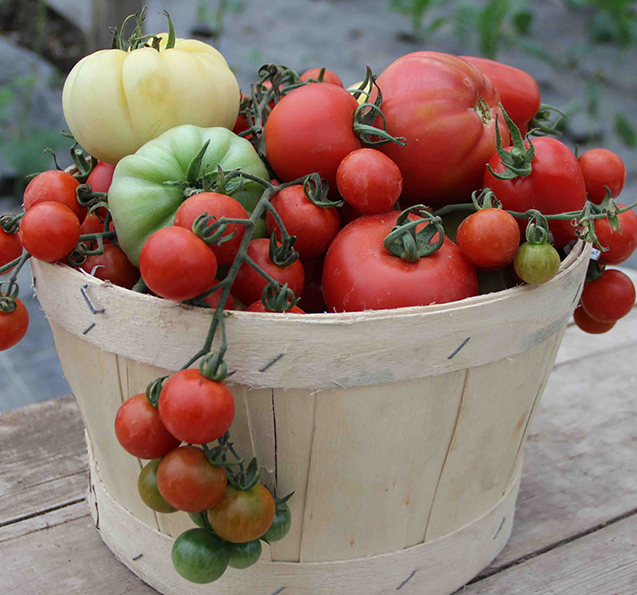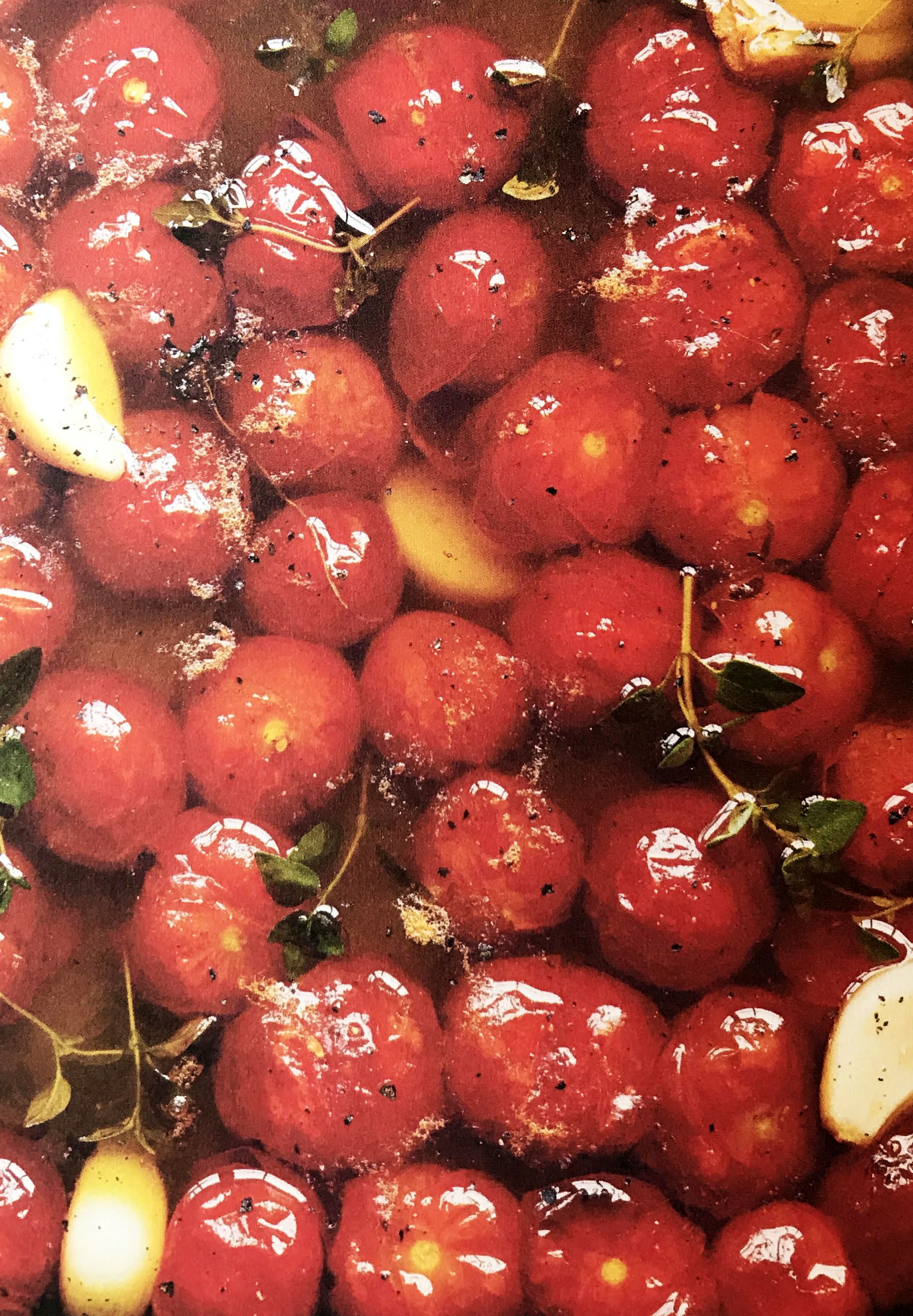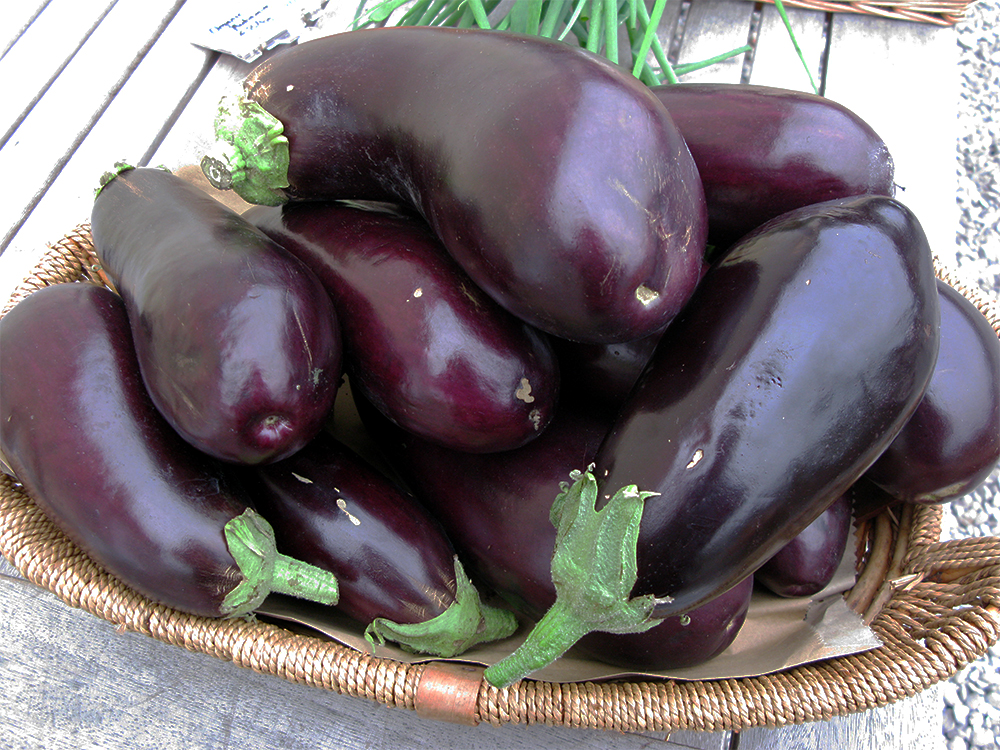The Darina Allen Column
 I've been a bit like a broken record throughout this Covid 19 pandemic reminding everyone about the importance of really focusing on the quality of the food we are feeding ourselves and our families at this critical time. Many people have been actively seeking out local farmers markets and buying directly from the growers and food producers – building up a bond of trust. Others have signed up to an Organic Box scheme where you receive a weekly box of beautiful seasonal vegetables, fruit and herbs fresh from the garden - chock full of minerals, vitamins and trace elements to boost your energy, mood and immune systems.
I've been a bit like a broken record throughout this Covid 19 pandemic reminding everyone about the importance of really focusing on the quality of the food we are feeding ourselves and our families at this critical time. Many people have been actively seeking out local farmers markets and buying directly from the growers and food producers – building up a bond of trust. Others have signed up to an Organic Box scheme where you receive a weekly box of beautiful seasonal vegetables, fruit and herbs fresh from the garden - chock full of minerals, vitamins and trace elements to boost your energy, mood and immune systems.
Those of you who, like us, embrace the concept of growing your own food have been enjoying the fruit of your labours and now fully understand the excitement, importance and frustrations of the 'farm to fork' concept and the heightened enjoyment of eating food you have personally grown and sown the seeds, watered, wed and harvested.
The pride and joy of sitting down to a plate of food where everything on your plate came from your garden or local producers known to you personally is tangible, you won't want to waste a single morsel of this precious food....
Now it's September and Summer 2020 has just whizzed by in a blur....Some growers are wondering what to do with the end of summer glut of home grown fruit and vegetables like large courgettes, squishy ripe tomatoes and aubergines.....One lady who rang me from the UK actually had a glut of figs. I was deeply envious but having never been in that fortunate situation I was slightly at a loss to think of how to use up almost 100 ripe figs other than making jam and lots of figgy tart and puddings, but she lives alone and we're not supposed to invite lots of friends around..... so what to do.....? Figs dry brilliantly, but Rory suggested freezing them for winter preserves. Or, in the absence of hot sun, how about experimenting with slowly drying them in a fan oven or dehydrator – Any other ideas?
Chillies, on the other hand, are easy - just thread the stalks onto a piece of strong cotton thread to make a truss or 'ristra' as they call it in Italy. Hang it on a hook in your pantry or loop them under your kitchen shelves. Either way they'll look great as well as being easy to snip off when you need to add a bit of excitement to a dish. Alternatively dig up your mature chilli plants, shake off the earth from the roots, pick off the leaves, hang it upside down in a well ventilated spot, turning every day or two until the chillies are dry. If you have a dehydrator they can be dried whole or in slices as can tomatoes and aubergines.
Dehydrators are not overly expensive - €50 – €200 depending on size and quality. For years I hesitated, reckoning that it would be a white elephant sitting in a corner of the kitchen used only sporadically. However, my dehydrator is in constant use. We dry a myriad of vegetables, fruit herbs and edible flowers. Students also love to experiment with it. Don't worry if you don't have a dehydrator, a fan oven at the lowest setting also works brilliantly, just spread out whole or sliced items on wire or oven racks and turn regularly. Keep an eye on them and then store in airtight jars.
We have buckets of super ripe, end of season tomatoes and like those of you who have grown your own we can't bear to waste a single one. We freeze lots whole, just as they are, for winter stews, tagines and of course our all-time favourite tomato fondue (defrost in a sieve to remove the excess liquid, which can be used in soups). The really soft squishy ones, bursting with flavour are cooked into purée to make tomato and basil soup for the winter that will be reminiscent of summer flavours. All soups and liquids are frozen in recycled one litre milk bottles and gallon cream containers. They stack neatly side by side and cost nothing.
Large courgettes don't have much flavour but can be frozen grated or in cubes (tray freeze) and added to frittatas, tomato fondue or gutsy winter stews with lots of rosemary, sage and thyme leaves to boost the flavour. As summer changes to autumn, basil will wither and fade, so preserve the best leaves in olive oil to add a taste of summer to winter dishes. Aubergines are best made into this spiced aubergine mixture – I can't tell you how many times this delicious pickle has come to the rescue, gorgeous with lamb or pork, mozzarella or paired with an oozing burrata as a starter.
Keen gardeners won't want to waste a morsel of their home grown produce. For more ideas – check out my Grow, Cook, Nourish book published in 2017, which has a how to use up a glut deliciously, suggestion for every fruit, vegetable and fresh herb.
Here's a few suggestions to get you going:
Tomato Purée
Tomato purée is one of the very best ways of preserving the flavour of ripe summer tomatoes for winter. Use for soups, stews, casseroles etc. [Note: make a double batch of this tomato purée recipe for Tomato Soup.)
2lb (900g) very ripe tomatoes
1 small onion, chopped
1 teaspoon sugar
good pinch of salt
a few twists of black pepper
Cut the tomatoes into quarters and put into a stainless steel saucepan with the onion, salt, freshly ground pepper and sugar. Cook, covered on a gentle heat until the tomatoes are soft (no water is needed). Put through the fine blade of the mouli-légume or a nylon sieve. Allow to get cold, then refrigerate or freeze.
 Confit of Tomatoes
Confit of Tomatoes
This method concentrates the flavour of the tomatoes deliciously. The oil absorbs the flavour of the tomatoes and will, of course, enhance dressings and salads. Serve on grilled bread, and with pasta, mozzarella or fish.
Makes 3 x 370g (13oz) jars approximately
1.3kg (3lb) ripe small or cherry tomatoes
5- 6 garlic cloves, slightly crushed
4-5 sprigs of fresh thyme
extra virgin olive oil, to cover
sea salt and freshly ground black pepper
Preheat the oven to 160°C/325°F/Gas Mark 3.
Choose an ovenproof dish that will just fit the tomatoes in a single layer. Remove the calyxes from the tomatoes and arrange them in the dish. Tuck a few garlic cloves and the sprigs of thyme in here and there between the tomatoes. Just cover with extra virgin olive oil and sprinkle with salt and freshly ground pepper. Bake for 1 1/2 hours or until soft and tender. Eat immediately or allow to cool. Store in a sterilised jar covered in the oil and use within a week or so.
Eat immediately or leave to cool then store in a sterilised jar covered in the oil and use within a week or so.

This is a delicious way to preserve a glut of aubergines – serve with lamb or pork, or just with cheese.
Makes 2kg (4 jars)
2kg aubergines, peeled and cut into thick julienne strips or chunks
4 tablespoons salt
1 litre white wine vinegar
2 tablespoons sugar
125ml extra virgin olive oil
2 chilli peppers, seeded and finely chopped
50g chives, finely cut
2 tablespoons marjoram
4 garlic cloves, halved
Preserving jars
Put the aubergines in a colander, sprinkle with salt, toss them, and allow excess liquid to to degorge in a colander for 30 minutes.
Bring the vinegar and sugar to the boil in a large saucepan. Add the aubergines and simmer for 5 minutes, being careful not to overcook. Drain, reserving the pickling liquid. Add the oil, chilli pepper, chives and marjoram to the aubergines, and toss well. Fill the jars, making sure the aubergines are submerged in the cooking liquid. Divide the garlic between the sterilized jars. If more juice is needed to cover the aubergines, add 1 to 2 tablespoons of the reserved pickling liquid. Seal each jar tightly. Store in a cool, dark place for 2-3 weeks before using.
Basil Oil
Basil may be used to flavour the oil, or the oil may be used to preserve the basil, depending on the quantity used. If using a large quantity of basil, you can preserve it in a jar with enough olive oil to completely cover it for up to three months. Basil oil may be used in salad dressings, vegetable stews, pasta sauces or many other instances.
extra virgin olive oil
fresh organic basil leaves
Ensure the basil leaves are clean and dry. Pour a little of the olive oil from the bottle and stuff at least 8–10 basil leaves into the bottle, or more if you like. The basil must be covered by at least 1cm (½ in) of oil. Seal and store in a cold place. We sometimes fill bottles three quarters full and then chill them. When the oil solidifies somewhat, we top it up with another layer of oil. If the basil is not submerged in the oil, it will become mouldy in a relatively short period of time.
How to Freeze Courgettes
When you are coping with a glut and have run out of meal slots to use them up it is really worth taking a little time to freeze the remainder of your harvest. Courgettes can be frozen in nuggets or medallions (see below) or simply grated. For the latter (no need to blanch), just grate the courgettes on the course side of a box grater, pack the shredded vegetable into small zip-lock freezer bags – say 8oz/225g in each. Flatten, press out all the air and seal. Label carefully with name, weight and date and freeze immediately. It will keep for the best part of a year but I prefer to use it within 5 or 6 months. To defrost: – take out of the freezer, allow to defrost then put into a sieve to squeeze out the extra liquid. Use for soup, casseroles or zucchini bread.
Courgette Medallions or Nuggets
Cur the courgettes in ½ inch rounds, or ¾ inch dice.
Bring a large pan of water to a fast rolling boil, add the courgette slices (not too many at a time). Bring the water back to the boil for just one minute. Scoop out the medallions or nuggets. Transfer to an ice bath to cool and then drain really well. Dry. Lay them out on a parchment paper covered baking sheet. Tray freeze for about 2 hours. Pack the frozen medallions or nuggets into freezer bags or boxes and refreeze immediately. They will keep for up to a year but best to use them up within 5/6 months. To use: add the still frozen courgettes directly into stews or casseroles close to the end of the cooking time. Remember they will add some extra liquid to the dish so allow for that in your measurements.
HOT TIPS
Go Native....Oysters, oysters everywhere
There's an R in the month, that means we can enjoy native Irish oysters (Ostrea Edulis) once again. They are only in season from September to April, unlike the curvy Gigas oysters often referred to simply as rock oysters which are available all year round. Oysters taste different from bay to bay around our coast. Taste and celebrate the distinctive briny flavours from Galway to Dungarvan. Natives are best enjoyed unadorned – "au natural" with perhaps a little squeeze of lemon juice. If you've never tried them, now is the time to savour Ireland's most sublime delicacy at it's very best. The renowned Kelly Oysters in Galway supply hand harvested Native Irish Oysters packed in seaweed to customers in Ireland, Europe and around the world.
Sourdough September is now in its 7th year
Real Bread Ireland and other 'real deal' artisan bakers around the country are sharing their skills as well as their natural sourdough loaves this month. The aim is to encourage more people to bake genuine sourdough, to highlight the growing number of independent bakeries and to help people to recognise and say no to faux sourdough of which there is lots around the country. Now that sourdough has finally become almost cult-like as a growing number of people recognise its nutritional value, more complex flavour and totally different texture, there is a genuine hunger to learn more about this ancient bread making technique. Learn the secret of our 48-hour fermented natural sourdough at our Sourdough Making Demonstrations on Friday 25th September at 2.30pm. Book online at cookingisfun.ie or call 021 4646785. Limited availability.





There are currently no comments
Leave a comment
Not a member? Register for your free membership now!
Or leave a comment by logging in with: